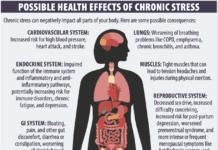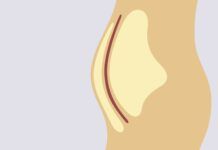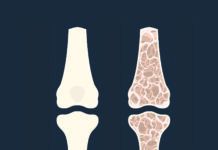Watching your waistline just got serious. A large new study links extra waist circumference to increased risk of death-even if youre not otherwise overweight.Eric J. Jacobs, PhD, and colleagues at the American Cancer Society, examined the association between waist circumfer-ence and mortality among 48,500 men and 56,343 women age 50 and older (av-erage age 69 for men and 67 for women). All had participated in the Cancer Preven-tion Study II Nutrition Cohort. Over about 14 years of total followup, 9,315 of the men and 5,332 of the women died.After adjusting for body mass index (BMI) and other risk factors, very large waists-47 inches or larger in men and 42 inches or larger in women-were associated with approximately twice the likelihood of dying during the study period. But having a larger waistline was linked to greater mortality risk across all BMI levels, including normal-weight men and women.For normal-BMI men, an additional 10 centimeters (3.9 inches) of waistline boosted the likelihood of dying by 16% compared to men with the same BMI but svelter waists. The association was strongest, surprisingly, for normal-weight women, for whom an extra 10 centimeters increased risk by 25%. Overall, the association between waistlines and mortality risk was linear, meaning there was no clear threshold for risk. Although the data came from a cancer study, the cause of death most associated with waist circumference was respiratory disease, followed by cardiovascular disease and then cancer.
| How Big Is Too Big? Patients are considered abdominally obese if their waist circumference measures 88 centimeters (34.6 inches) or larger for women or 102 centimeters (40.1 inches) or larger for men. More than half of US men and 70% of women ages 50 to 79 have waistlines greater than this threshold. To check yourself, use a tape measure around your waist at the navel (no fair sucking in your gut). |
Regardless of weight, avoiding gains in waist circumference may reduce risk of premature mortality, Jacobs and colleagues concluded. Even if you havent had a notice-able weight gain, if you notice your waist size increasing, thats an important sign. Its time to eat better and start exercising more.he scientists noted that waist circumference is strongly correlated with fat tissue surrounding the organs in the abdomen, which is thought to be more dangerous than fat under the skin. Previ-ous research has linked extra abdominal fat-regardless of BMI-to heart disease, type 2 diabetes, insulin resistance, inflam-mation and cholesterol concerns.The researchers also suggested their results may affect the development of future guidelines for obesity. Currently avail-able clinical guidelines from the National Institutes of Health (NIH) are based on evidence from the 1990s, they pointed out. These guidelines recommend that waist circumference be used to identify increased disease risk only among individuals in the overweight and obese categories of BMI. The NIH guidelines dont specifically recom-mend weight loss for abdominally obese patients [see box] who arent obese unless they also have two or more cardiovascular risk factors.TO LEARN MORE: Archives of Internal Medicine, August 9/23, 2010; abstract at archinte.ama-assn.org/cgi/content/abstract/170/15/1293.























